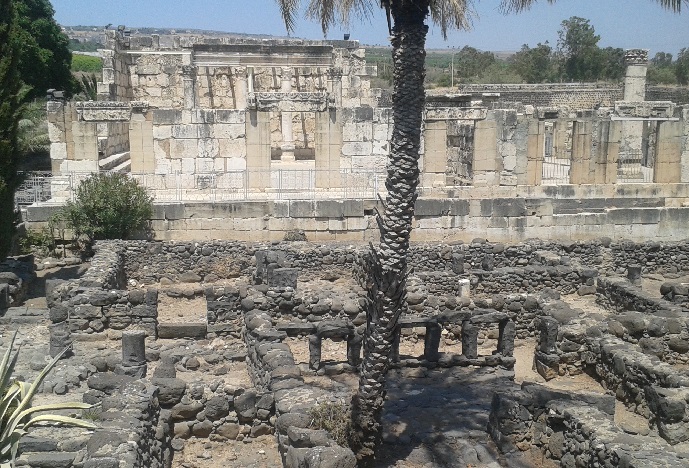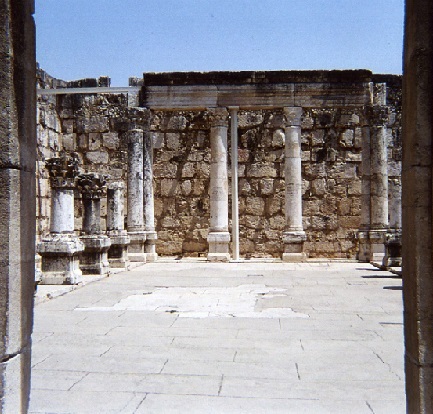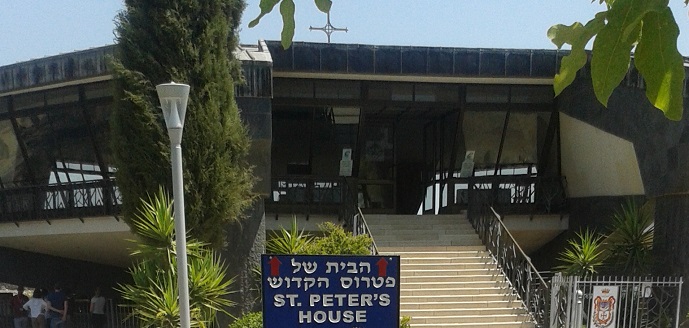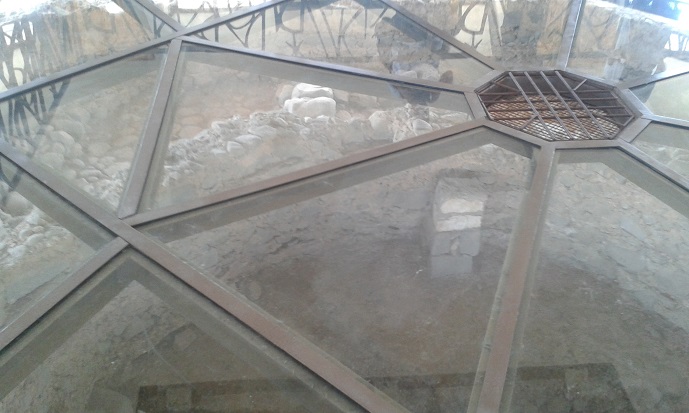Capernaum
Capernaum, Israel

Capernaum, Northern Israel
Capernaum is a town on the north shore of Lake of Gennesaret. In the foreground above are the excavated ruins of the town's houses; in the background are the excavated ruins of the synagogue of Capernaum.
Capernaum served as Jesus' base during His 3-year ministry on earth: Now when Jesus heard that John had been put in prison, He departed to Galilee. And leaving Nazareth, He came and dwelt in Capernaum, which is by the sea... (Matthew 4:12-13)
The Roman army spared Capernaum while sacking northern Israeli towns during its 67-70 AD campaign against the Jewish revolt. But Capernaum declined after Jesus' era and eventually died out, as Jesus said it would for not believing in Him despite the many miracles He did there: "And you, Capernaum, who are exalted to heaven, will be brought down to Hades; for if the mighty works which were done in you had been done in Sodom, it would have remained until this day" (Matthew 11:23).
After lying buried for centuries, the ruins Capernaum were discovered in 1838, and the ruins of the synagogue of Capernaum, in 1866. Excavation still continues today. Please take another look at the photo above.
Notice anything peculiar?
The houses of Capernaum differ in color from the synagogue of Capernaum because the "white" synagogue (above and below) was built in the 4th century on top of the original "black" synagogue (bottom of the second photo) in which Jesus taught: Then they went into Capernaum, and immediately on the Sabbath He entered the synagogue and taught. (Mark 1:21)
 This
black synagogue is the one built by the Roman
centurion: And a certain centurion’s servant, who was
dear to him, was sick and ready to die. So when he heard about Jesus, he
sent elders of the Jews to Him, pleading with Him to come and heal his
servant. And when they came to Jesus, they begged Him earnestly, saying
that the one for whom He should do this was deserving, “for he loves our
nation, and has built us a synagogue. (Luke 7:2-5)
This
black synagogue is the one built by the Roman
centurion: And a certain centurion’s servant, who was
dear to him, was sick and ready to die. So when he heard about Jesus, he
sent elders of the Jews to Him, pleading with Him to come and heal his
servant. And when they came to Jesus, they begged Him earnestly, saying
that the one for whom He should do this was deserving, “for he loves our
nation, and has built us a synagogue. (Luke 7:2-5)
Peculiarly, the centerpiece of the ruins of Capernaum, managed by the Catholic church, isn't what or where Jesus taught, but where Peter lived. A state-of-the-art chapel (below) with transparent glass floor was built right over the house of Peter so that Catholic mass could be held while peering down into his house.


When a guide leading a group of Catholics was asked for the evidence of this being Peter's house, he replied that it's the largest house in the ruins of Capernaum. When asked if Peter had gotten rich after Jesus ascended to heaven, he replied, "Of course not." Hadn't Peter been a fisherman? "Yes." So why would a fisherman own the biggest house in town?
Do archaeological and other scientific discoveries support or contradict the Bible?
See Science And Bible.
Travel Tip
To get to Capernaum without a car, you can take a bus from Tiberias, get off at
the Karie Deshe junction, and then walk the last 3km along the
Lake of
Gennesaret. Be advised that the locals, including the bus driver, won't
understand you if you ask for "Capernaum." You need to say, "Kfer
Nahum," the Hebrew name for Capernaum that literally means the "Village of
Nahum."